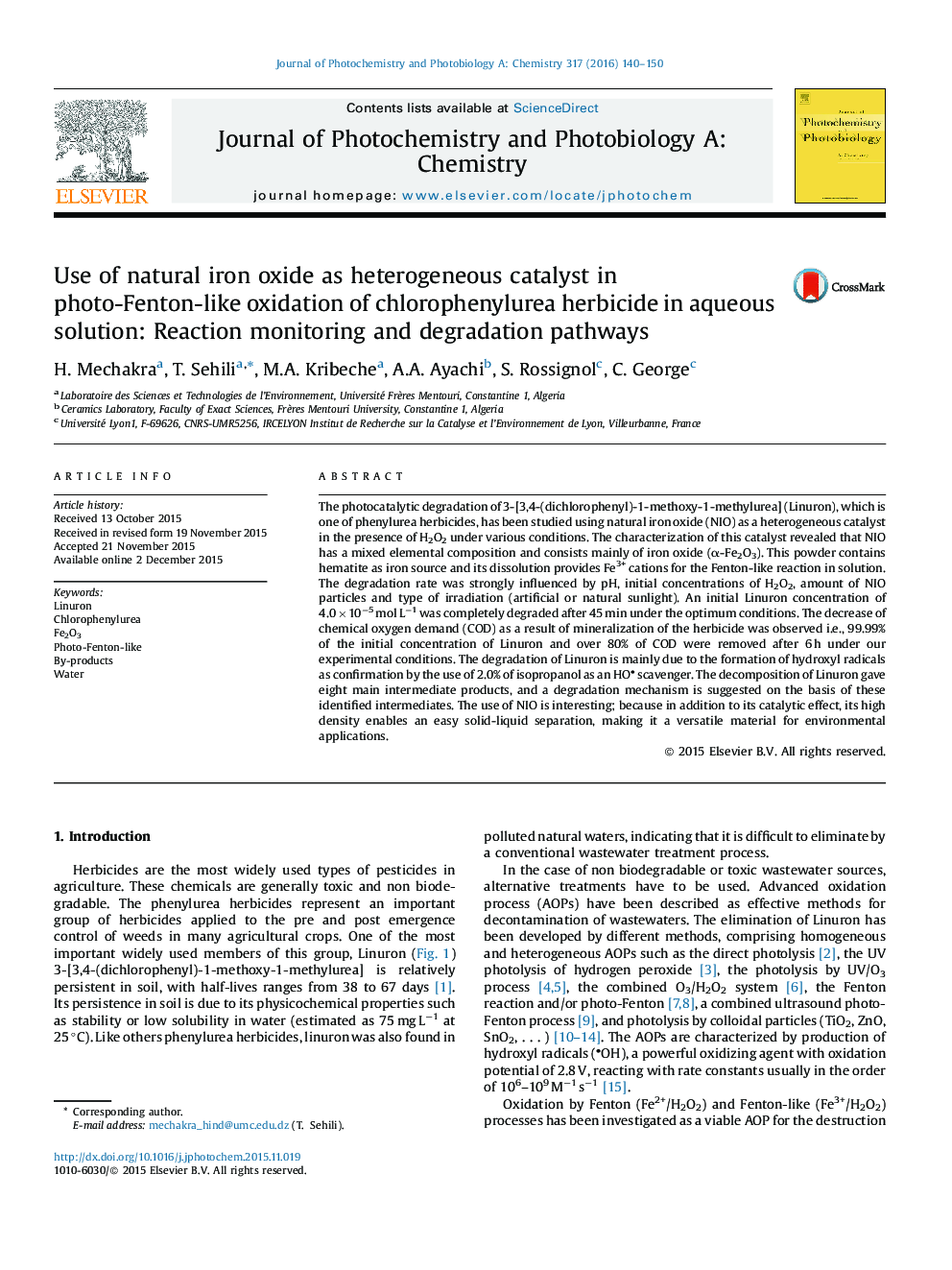| کد مقاله | کد نشریه | سال انتشار | مقاله انگلیسی | نسخه تمام متن |
|---|---|---|---|---|
| 26351 | 43948 | 2016 | 11 صفحه PDF | دانلود رایگان |
• A natural iron oxide is used as a heterogeneous catalyst in photo-Fenton-like process.
• The natural iron oxide reduces effectively Linuron concentration from aquatic environment.
• The decomposition of Linuron gives eight main intermediate products.
• We propose the degradation pathways for Linuron by photo-Fenton like process.
The photocatalytic degradation of 3-[3,4-(dichlorophenyl)-1-methoxy-1-methylurea] (Linuron), which is one of phenylurea herbicides, has been studied using natural iron oxide (NIO) as a heterogeneous catalyst in the presence of H2O2 under various conditions. The characterization of this catalyst revealed that NIO has a mixed elemental composition and consists mainly of iron oxide (α-Fe2O3). This powder contains hematite as iron source and its dissolution provides Fe3+ cations for the Fenton-like reaction in solution. The degradation rate was strongly influenced by pH, initial concentrations of H2O2, amount of NIO particles and type of irradiation (artificial or natural sunlight). An initial Linuron concentration of 4.0 × 10−5 mol L−1 was completely degraded after 45 min under the optimum conditions. The decrease of chemical oxygen demand (COD) as a result of mineralization of the herbicide was observed i.e., 99.99% of the initial concentration of Linuron and over 80% of COD were removed after 6 h under our experimental conditions. The degradation of Linuron is mainly due to the formation of hydroxyl radicals as confirmation by the use of 2.0% of isopropanol as an HO scavenger. The decomposition of Linuron gave eight main intermediate products, and a degradation mechanism is suggested on the basis of these identified intermediates. The use of NIO is interesting; because in addition to its catalytic effect, its high density enables an easy solid-liquid separation, making it a versatile material for environmental applications.
Journal: Journal of Photochemistry and Photobiology A: Chemistry - Volume 317, 15 February 2016, Pages 140–150
